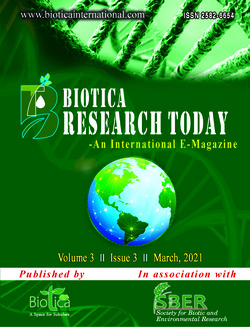
Potentiality of Ploidy Breeding in Tropical Fruit Crops
Rakesh Kumar Pattnaik*
Dept. of Fruit Science and Horticulture Technology, College of Agriculture, Odisha University of Agriculture and Technology, Bhubaneswar, Odisha (751 003), India
Tushar Arun Mohanty
Dept. of Plant Breeding and Genetics, Dr. Rajendra Prasad Central Agricultural University, Pusa, Samastipur, Bihar (848 125), India
DOI: NIL
Keywords: Aneuploidy, Euploidy, Ploidy, Tropical fruit
Abstract
The basic principle of plant breeding is utilization of existing variation and creation of new variation for developing a new variety. Ploidy breeding is one of the important tools used for crop improvements. It is mainly of two types i.e. euploidy and aneuploidy. It may occur naturally or can be induced by artificial means. Ploidy breeding is an important tool for widening variability in tropical fruit crops with narrow genetic base like banana. It has really wide implications in obtaining bigger fruit size and disease resistant plant types. Induced polyploidy and subsequent breeding have led to development of some useful types in Annona squamosa L., Syzizium cumini, Zizyphus mauritiana, Psidium guajav L., Aegle marmelos. Since these fruits are vegetatively propagated and their seed is of secondary importance, they offer a wide scope for polyploidy breeding.
Downloads
not found
Reference
Bhaktavathsalu, C.M., P. Manickavasagam, T.T. Kaliaperumal, A. Hanneef Baig, S. Sathiamoorthi, 1968. Comparative studies on “Klue Teparod”, a natural tetraploid banana and a synthetic tetraploid hybrid. South Indian Hort. 16, 58-62.
Ramkumar, 1975. Induced polyploidy and cytological studies in guava. Indian J. Hort. 32(3), 128-130.
Vakili, N.G., 1962. Colchisine –induced polyploidy in Musa. Nature 194, 453-454.
